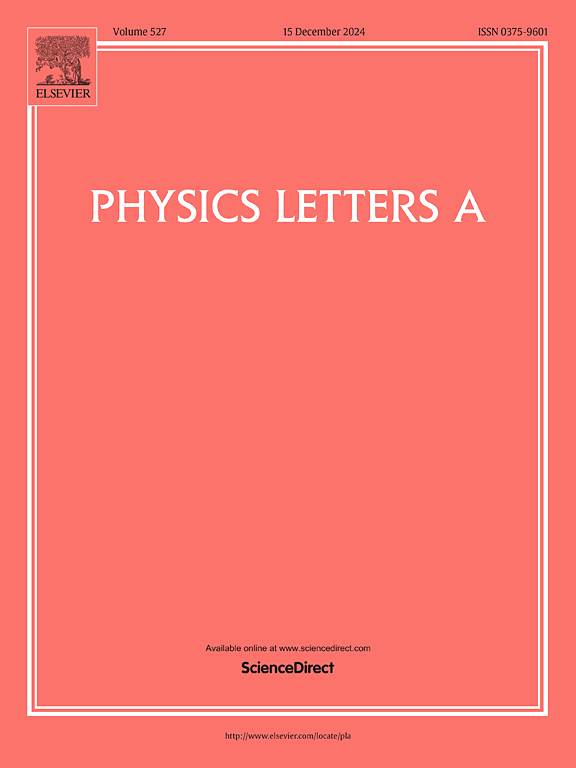Vanadium dioxide and graphene-based switchable and tunable terahertz absorber
IF 2.3
3区 物理与天体物理
Q2 PHYSICS, MULTIDISCIPLINARY
引用次数: 0
Abstract
A terahertz absorber with switchable and tunable absorption capabilities was proposed. The absorber comprises six layers including vanadium dioxide (VO2), Topas layer, graphene layer, another VO2 layer, another Topas layer and a gold layer as substrate. The absorption performance of the absorber is investigated using the time-domain finite-difference (FDTD) method. The results demonstrate that the absorber is capable of achieving single-band absorption from 0.98 to 3.92 THz or dual-band absorption from 1.51 to 3.45 THz and 7.0 to 8.35 THz via the phase change of VO2 through temperature variation. In the case of dual-band absorption, it can even realize an absorption strength of 99 % within a bandwidth of 0.8 THz, demonstrating its excellent absorption performance. Additionally, the absorption rate of the absorber can be dynamically adjusted by tuning the graphene's Fermi level (EF). Moreover, the physical principles of absorption are elucidated through impedance matching theory and transmission line theory. Furthermore, the effect of the incidence angle and polarization angle on absorption was studied and found that the structure is insensitive to two factors. The research paves the way for innovative designs of terahertz functional devices aimed at applications such as stealth, modulation, switching, and sensing within the terahertz frequency range.
基于二氧化钒和石墨烯的可切换和可调谐太赫兹吸收剂
提出了一种吸收能力可切换可调谐的太赫兹吸收器。吸收剂由氧化钒(VO2)层、Topas层、石墨烯层、另一层VO2层、另一层Topas层和作为衬底的金层组成。采用时域有限差分(FDTD)方法对吸波器的吸收性能进行了研究。结果表明,通过温度变化引起的VO2相变,吸收剂可以实现0.98 ~ 3.92 THz的单波段吸收,也可以实现1.51 ~ 3.45 THz和7.0 ~ 8.35 THz的双带吸收。在双波段吸收的情况下,在0.8太赫兹的带宽内甚至可以实现99%的吸收强度,显示出其优异的吸收性能。此外,吸收剂的吸收率可以通过调节石墨烯的费米能级(EF)来动态调节。通过阻抗匹配理论和传输线理论阐述了吸收的物理原理。此外,研究了入射角和偏振角对吸收的影响,发现该结构对这两个因素不敏感。该研究为太赫兹功能器件的创新设计铺平了道路,这些器件旨在太赫兹频率范围内的隐身、调制、开关和传感等应用。
本文章由计算机程序翻译,如有差异,请以英文原文为准。
求助全文
约1分钟内获得全文
求助全文
来源期刊

Physics Letters A
物理-物理:综合
CiteScore
5.10
自引率
3.80%
发文量
493
审稿时长
30 days
期刊介绍:
Physics Letters A offers an exciting publication outlet for novel and frontier physics. It encourages the submission of new research on: condensed matter physics, theoretical physics, nonlinear science, statistical physics, mathematical and computational physics, general and cross-disciplinary physics (including foundations), atomic, molecular and cluster physics, plasma and fluid physics, optical physics, biological physics and nanoscience. No articles on High Energy and Nuclear Physics are published in Physics Letters A. The journal''s high standard and wide dissemination ensures a broad readership amongst the physics community. Rapid publication times and flexible length restrictions give Physics Letters A the edge over other journals in the field.
 求助内容:
求助内容: 应助结果提醒方式:
应助结果提醒方式:


